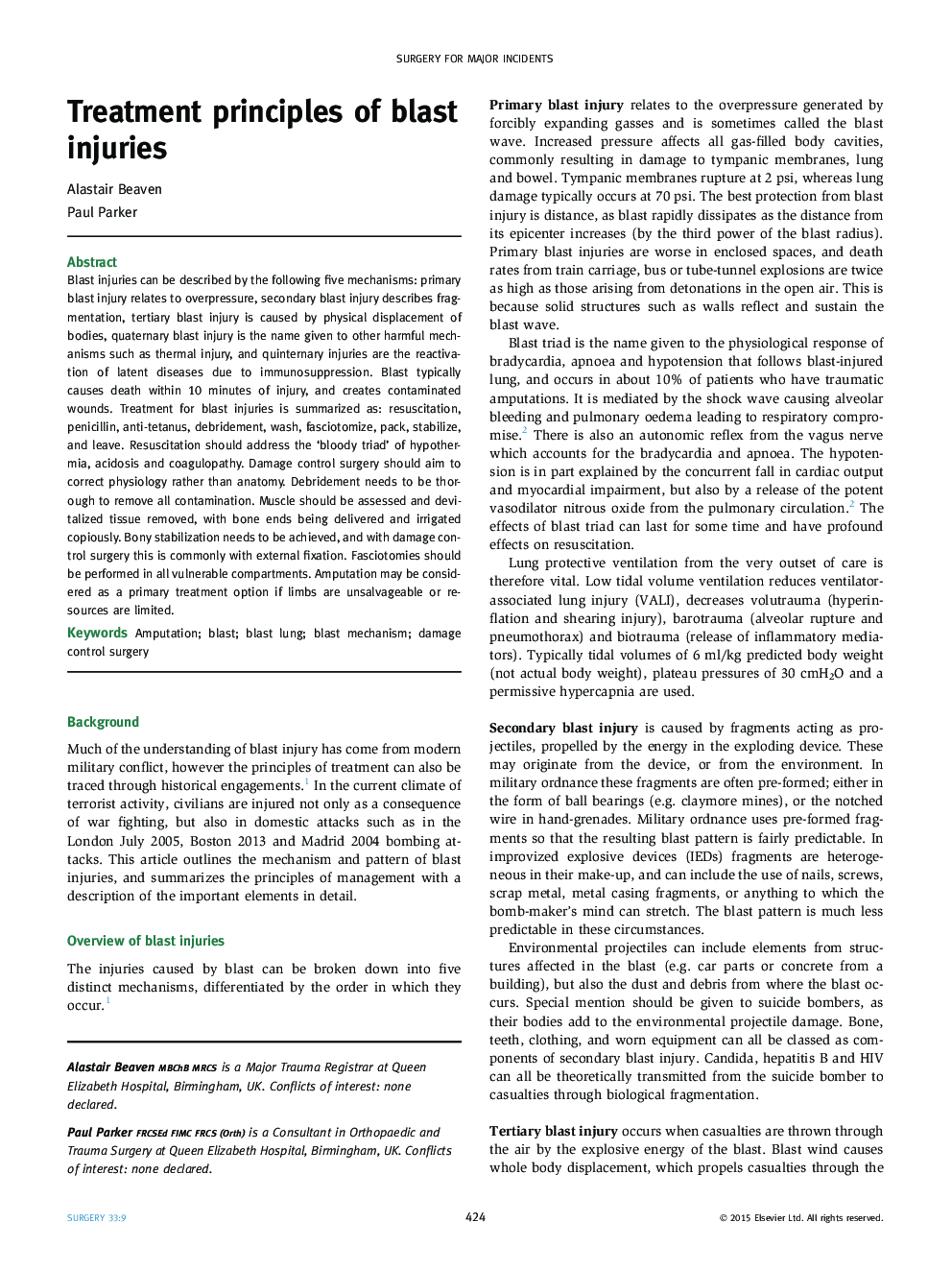| کد مقاله | کد نشریه | سال انتشار | مقاله انگلیسی | نسخه تمام متن |
|---|---|---|---|---|
| 3838373 | 1247715 | 2015 | 6 صفحه PDF | دانلود رایگان |
Blast injuries can be described by the following five mechanisms: primary blast injury relates to overpressure, secondary blast injury describes fragmentation, tertiary blast injury is caused by physical displacement of bodies, quaternary blast injury is the name given to other harmful mechanisms such as thermal injury, and quinternary injuries are the reactivation of latent diseases due to immunosuppression. Blast typically causes death within 10 minutes of injury, and creates contaminated wounds. Treatment for blast injuries is summarized as: resuscitation, penicillin, anti-tetanus, debridement, wash, fasciotomize, pack, stabilize, and leave. Resuscitation should address the ‘bloody triad’ of hypothermia, acidosis and coagulopathy. Damage control surgery should aim to correct physiology rather than anatomy. Debridement needs to be thorough to remove all contamination. Muscle should be assessed and devitalized tissue removed, with bone ends being delivered and irrigated copiously. Bony stabilization needs to be achieved, and with damage control surgery this is commonly with external fixation. Fasciotomies should be performed in all vulnerable compartments. Amputation may be considered as a primary treatment option if limbs are unsalvageable or resources are limited.
Journal: Surgery (Oxford) - Volume 33, Issue 9, September 2015, Pages 424–429
